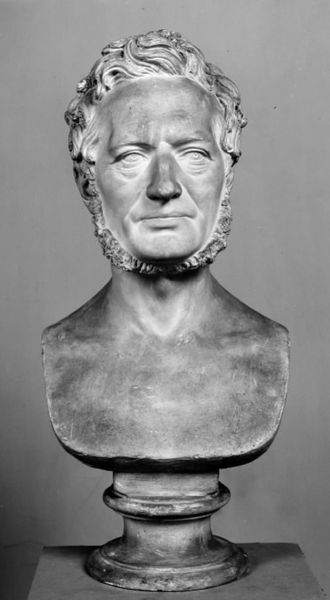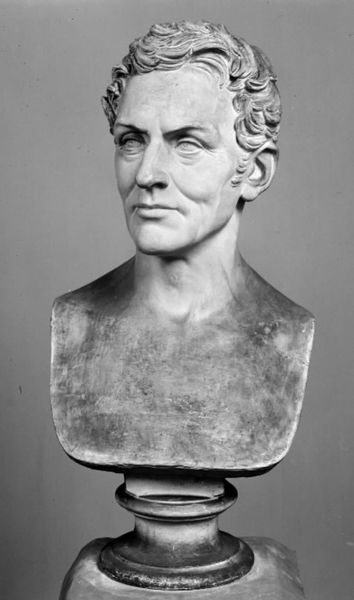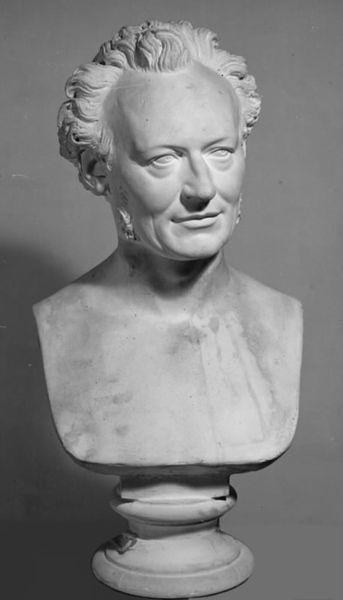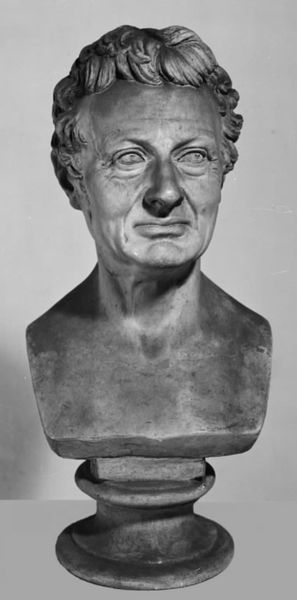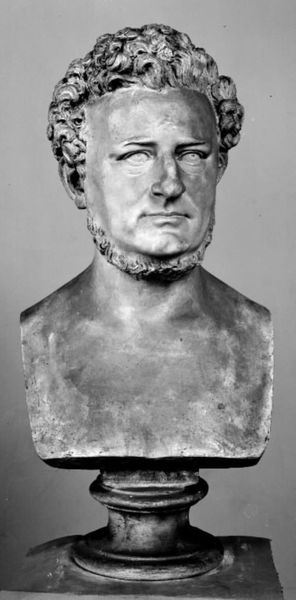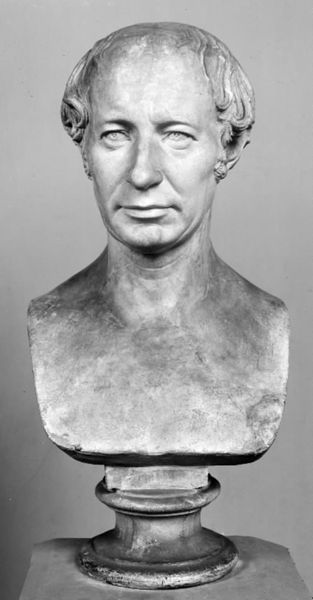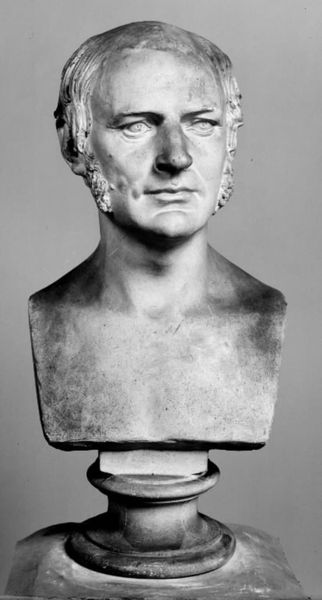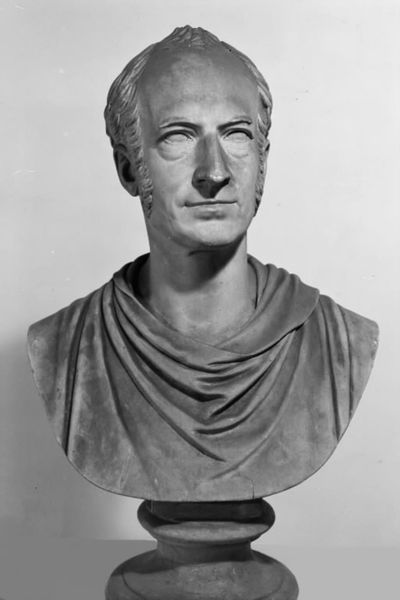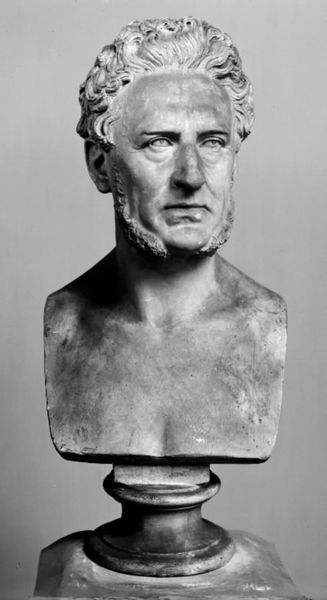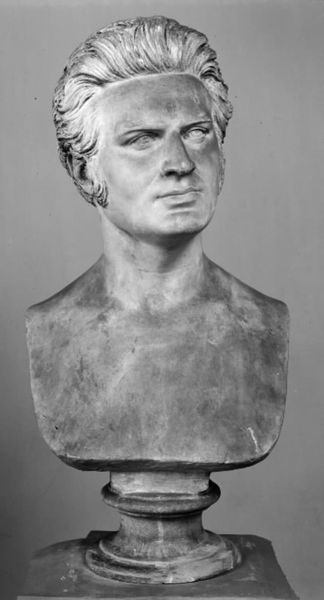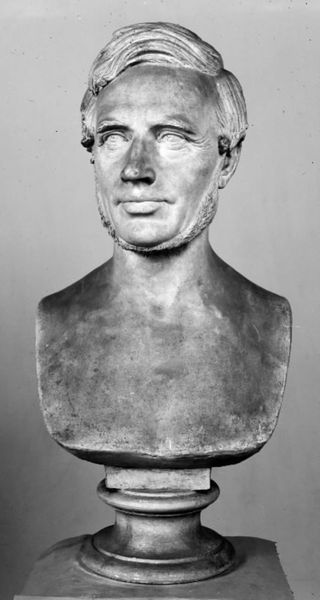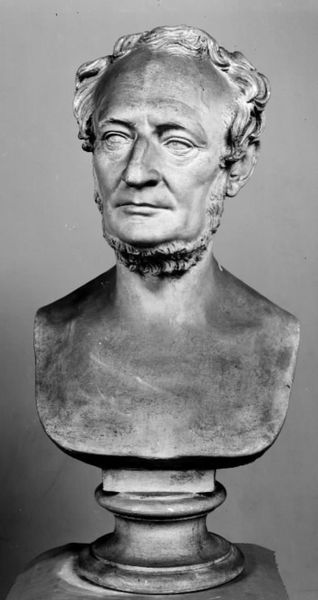
Dimensions: 63.6 cm (height) (Netto)
Editor: Here we have "Tekstilfabrikant Isak H. Ruben," a marble sculpture by H.W. Bissen from 1868. He seems to be looking directly at us with a very subtle, knowing smile. It’s quite arresting. What strikes you most about this work? Curator: The way the subject's gaze meets ours is significant. Portraiture, particularly in sculpture, was a powerful means of solidifying social memory. Ruben, the textile manufacturer, isn't just a man; he's an embodiment of a rising bourgeois class. Editor: A rising class? Curator: Absolutely. Consider the careful detail in his hair, the folds around his eyes—these aren't mere aesthetic choices. They convey a sense of wisdom, experience, and, importantly, status. He is immortalized in the tradition of the classical bust to communicate power and prestige. Notice also how the turn of his head creates movement, a spark of life. This tension is key to understanding him as an individual rather than just a figurehead. Does this subtle dynamism affect your viewing? Editor: It does. There’s almost a sense of him about to speak, even. Curator: Precisely. And in that potential for speech lies the essence of memory—of a story waiting to be told. Ruben's story, and the story of his class. Through Bissen’s skill, the textile merchant has become more than just a face in stone, hasn't he? Editor: He has. I'm starting to see this sculpture as more than just a portrait, it's a statement about a changing society. Curator: Indeed. Sculpture commemorates shifts in time, and our interpretations evolve alongside these objects.
Comments
No comments
Be the first to comment and join the conversation on the ultimate creative platform.
